End of the line
We don’t notice it very much, if we live in towns and if we live in ordinary houses, because we build our streets and our homes to seem to be non wiggly. We’re confronted with tables, chairs, walls, window frames, and we get a sense of non wiggly reality.
Then we are also always in conflict with wiggliness. We try for example not to let the stars seem to be disordered, but to organize them into constellations. The constellations aren’t there, there are no strings joining those stars. Seen from another point of view in space those constellations are nowhere to be found.
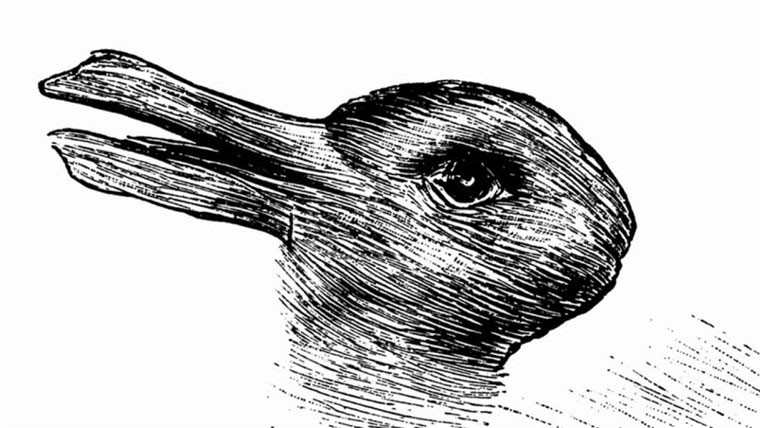
from the 23 October 1892 issue of Fliegende Blätter
“The physical world is fundamentally wiggly.” — Alan
During the 18th century when Western man had a peculiar passion for symmetrical order, somebody wrote an essay saying that the stars have been very poorly disposed and if they had been arranged in geometrical patterns it would have been far more consistent with the divine reason.
So, our world is wiggly, all of us are wiggly. Objects, trees, rocks, clouds, and waters are the outlines of islands. It’s all wiggly. In that sense the universe is rather like an enormous Rorschach.

If you examine the animal paintings in the caves of Lascaux, which are probably the earliest art-forms in existence it is apparent that the painters of those images first looked at the rock, at its contours, at the smudges and various changes of color in and saw the animals and creatures that they painted. Just as you might see something in a Rorschach blot. A curious ability of the mind of man to pick out significant things in any kind of observation.
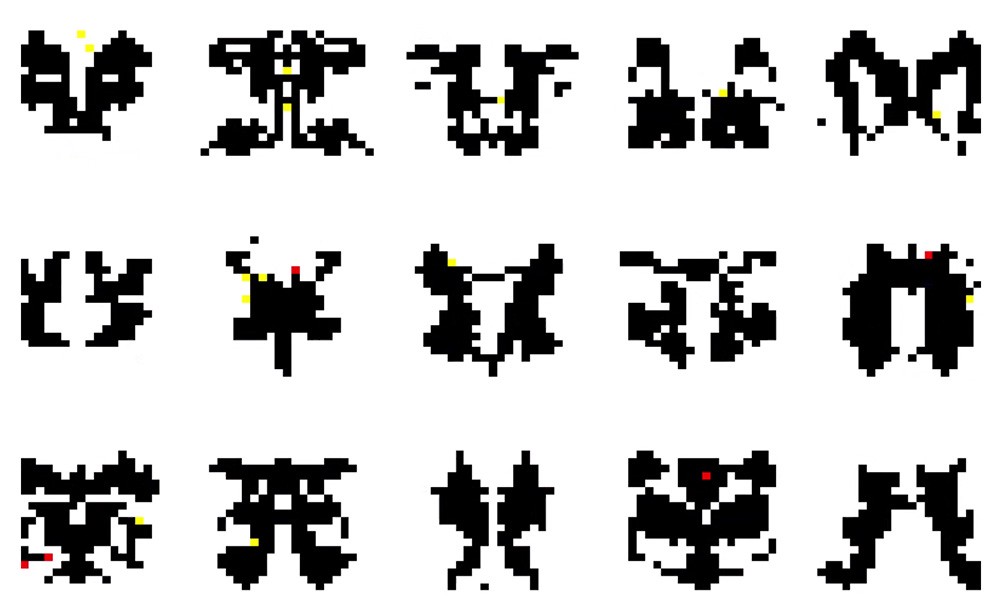
Case #1 — Paul, edited by M.
Primarily, the brain needs to be able to predict the world, to be successful, and to survive. To do that, it needs to build an internal model of that world outside. The difficulty starts because we don’t have direct contact with the world outside.
“Each of us lives within the universe or the prison of their own brain.” — Vernon Mountcastle
We have the illusion of direct contact, we have the illusion of reality. Projecting from it are millions of fragile sensory nerve fibres, arranged in groups, uniquely adapted to sample the energetic states of the world: heat, light, force, chemical composition. That’s all we can know of it directly. Everything else is inference.
Vernon’s statement is profound because it is telling us that we are bringing something to the act of perceiving reality. That it is worth considering the nature of that inference.
“Objects are always imagined as being present in the field of vision…” — Hermann Von Helmholtz
Von Helmholtz, a 19th century scientist, thought a lot about perception, perceiving and experiencing the world as an inferential, logical process. In fact, he said that perception is an act of imagination. We back-project to the cause of our sensations. This is a form of inference that Charles Peirce, an early 20th century philosopher referred to as abductive inference, or in short, abduction.
Abductive inference really refers to reasoning backwards from evidence to the causes of that evidence. We have the evidence in our senses, we need to reason backwards to become aware. Peirce pointed out that this is one of the shakiest, most fragile, most tenuous forms of logical inference that you could have. Therefore, he referred to it as guessing.
In any given sensory experience that we have, there is an infinite number of possible causes that could have given rise to that. We are stuck with having to decide about what could have been that cause.
“The whole fabric of our knowledge is a matted felt of pure hypothesis.” — Charles Peirce
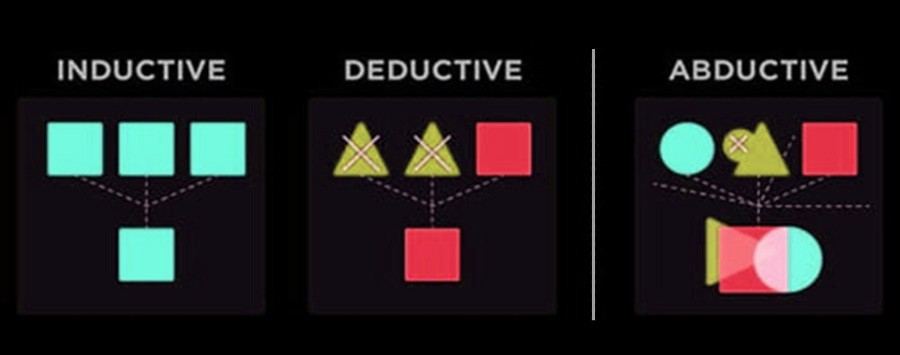
We seem to get by. We do manage. Thomas Bayes developed a theorem in the 18th century that describes a reason for this process.
Although he did not use this exact term, he was talking about it as a form of abductive inference. Bayes suggested: the optimal way is to take the evidence, but also to take what you already know, what your prior experience and expectation is, fit those two together and resolve the ambiguity like that.
Imagine you’re walking down a country lane and you hear the clip-clop of hoof-taps. You confidently expect that what will come around the corner next is a horse, but the evidence you have doesn’t tell you it is a horse through direct observation
“Who can tell the hoof-taps of a horse from a zebra, a camel, or somebody banging a couple of coconut shells together?”
The evidence itself is ambiguous. But of course, it’s your prior knowledge to choose the most likely answer, not a zebra, not a camel but a horse. That’s essentially the insight provided by Bayes theorem, the notion of the inference that we apply to the world. There’s good evidence that this sort of inference also occurs at lower unconscious perceptual levels, it is even suspected, but not proven, we’re doing it all the time.
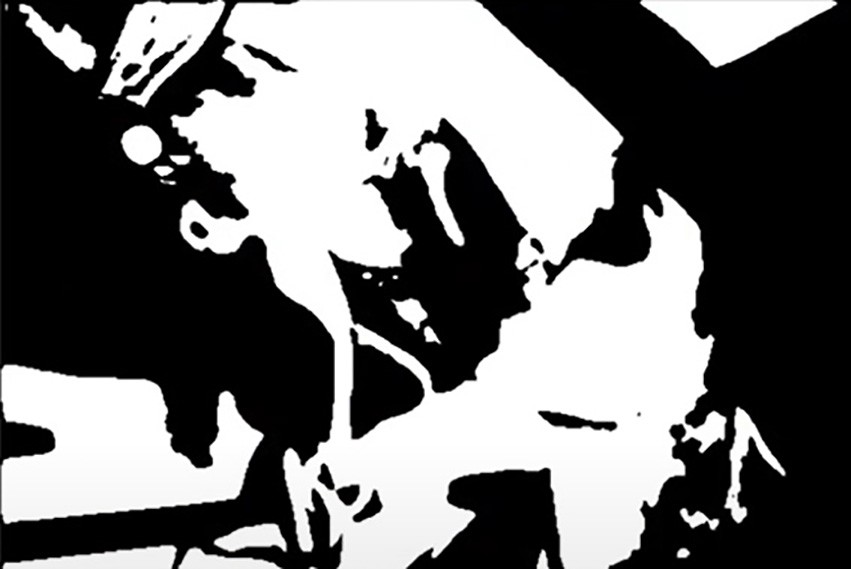
Look at this image above. You, who haven’t seen what I’ve seen, this image appears as a meaningless collection of black and white blobs.
To me it’s not, to me it’s a very meaningful picture. I can see a lot in it.
I can see a woman.
I can see that she is young.
I can see she’s wearing a hat.
I can see that she’s happy.
And I can see that she’s kissing a horse.
The reason I can see all that is not necessarily because I am hallucinating — although there’s an element of that, I guess. But the main reason I see all this is because I’ve seen the original picture.
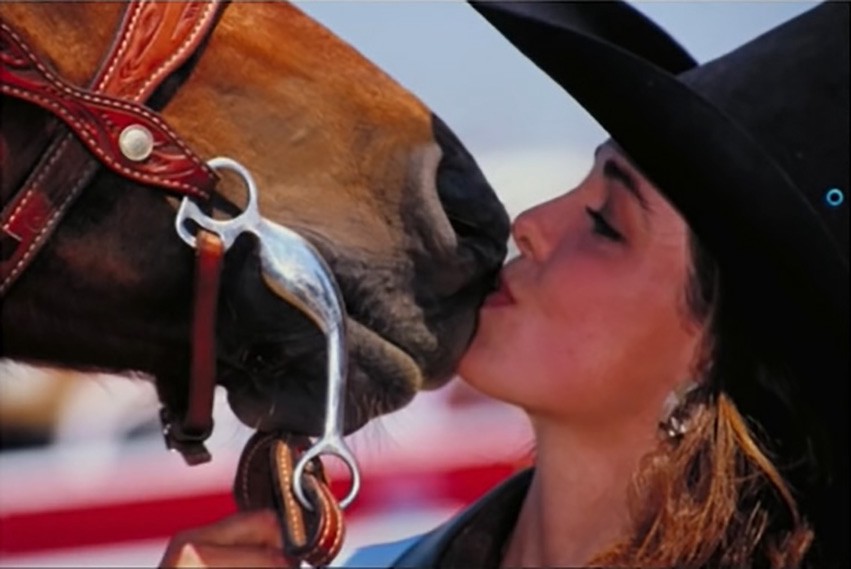
This image was the original picture from which the first one was created. Now, with your prior information, your prior expectation, it becomes possible that you may now be able to look at the black and white blobby image and see the woman kissing the horse. Funny thing is this also works in the auditory domain.
If you listen to a scrambled track record it might sound like a sort of meaningless bird-song type of sound. But if you would play the original record and directly after that the scrambled record you will hear the sound-patterns more easily.
The reason it becomes recognizable is your prior expectations and your prior knowledge. It’s very striking just how automatic and easy it is to make sense of what was previously mere noise, because of what your expectations brought to the table.
.
We’ve got means of dealing with the world, which allows for the ambiguity of our incoming messages. It allows us to assess what the cause is likely to be, by using this inferential process based on prior knowledge and triggered by external sensory input.
Perception is an active process, it is not a passive receiving of a genuine world out there.
Q: If the process is active enough to allow us to recognize a signal in the noise, by removing its ambiguity, is it also active enough to create perceptions?
We are very inclined to create our own perceptions. As Von Helmholtz described it; perception itself is controlled hallucination, balancing between what’s coming in and what we already know. Under some circumstances we don’t have any strong expectations, in other circumstances we do. When we have these prior expectations, we will weigh them in.
We all define ourselves according to our internal models of the world. We define our place in relation to others, in terms of shared models of the world. If somebody’s building a model that isn’t shared by other people, he/she will end up in a very isolating place, because their reality becomes too different from our common ground.
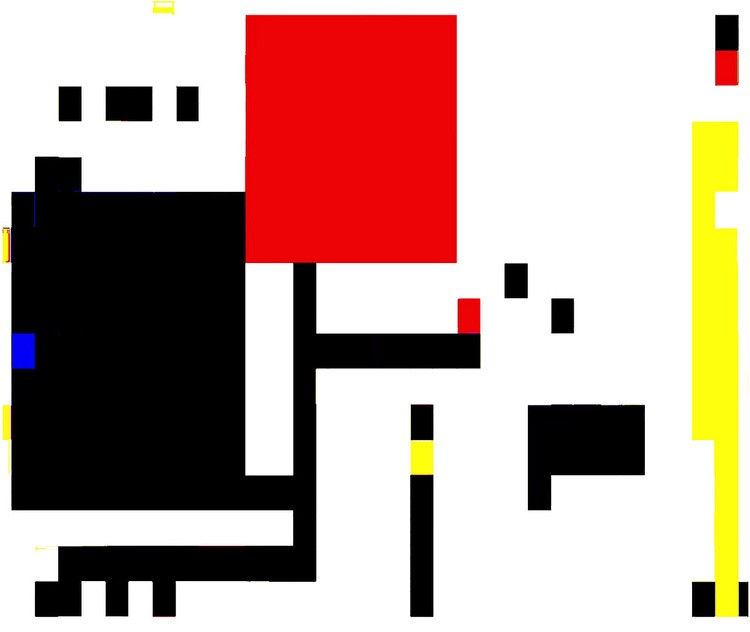
[For insiders: Joaquín Torres García vs. Theo van Doesburg] (2018), Marcel Moonen
We really have to take a step forward and think about experiences like this at other levels. That includes — I think very strongly — Art.
Case #2 — Daniel, edited by M.

This is a painting by Bellotto. It’s in a museum in North Carolina. Bellotto was a student of Canaletto’s. I love Canaletto's paintings, because Canaletto has this fantastic detail, and you can get right up and see all the details on the painting. I started across the hall in North Carolina, because I thought it was probably a Canaletto, and would have all that detail in it.
I noticed on the bridge in the background a lot of people — you can just barely see them walking across. I thought, as I got closer, I would be able to see all the details of most people, see their clothes, and so forth.
As I got closer and closer, I screamed! Because when I got closer, I found no detail at all. There was just little artfully placed blobbing of paint…As I walked towards the painting I was expecting detail that wasn’t there.
“The artist had very cleverly suggested people and clothes and wagons and all sorts of things.” — Daniel
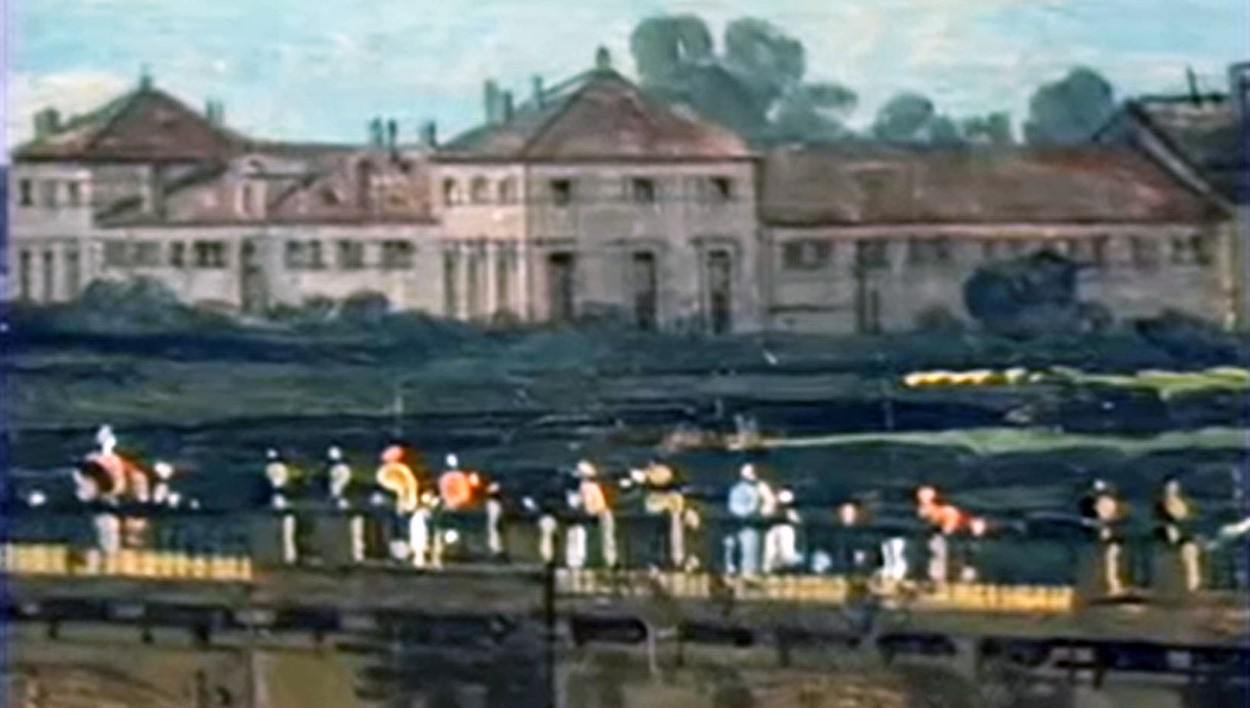
You can get a better view of the blobs.
See, when you get really close, they are really just blobs of paint.
What does your brain do when it takes the suggestion? When an artful blob of paint or two, by an artist, suggests a person — Do they send little painters out to fill in all the details in your brain somewhere? I don’t think so, not a chance. But then, how on earth is it done?
“The detail is not created from direct sensory input. It is our previous expectation interfering with the carefully placed blobs by the artist, a form of abductive interference.” — M.
Case #3 — Anil, edited by M.
One of the most basic questions you can ask is, do we consciously see what we expect to see? Or do we see what violates our expectations of what we expect? And a recent study from a research group, led by Y. Pinto used a method called continuous flash suppression to address this question. It’s illustrated here.

You see different images in different eyes. In one eye you see this rapidly changing generic pattern of squares. In the other eye, you either see a face or a house.
Initially, the person would just see this generic pattern, and then they’ll see either a house or a face. And simply, you just ask them to expect to see, you just tell them a face is more likely or a house is more likely.
What we find over several studies is that we see faces more quickly when that’s what we’re expecting to see. It may seem obvious, but it could be the other way around. At least in these studies, we see what we expect to see, not what violates our expectations. That’s the data. The same test worked with images of houses.
These kinds of studies support the idea that the top-down predictions are important for determining what we’re conscious of.
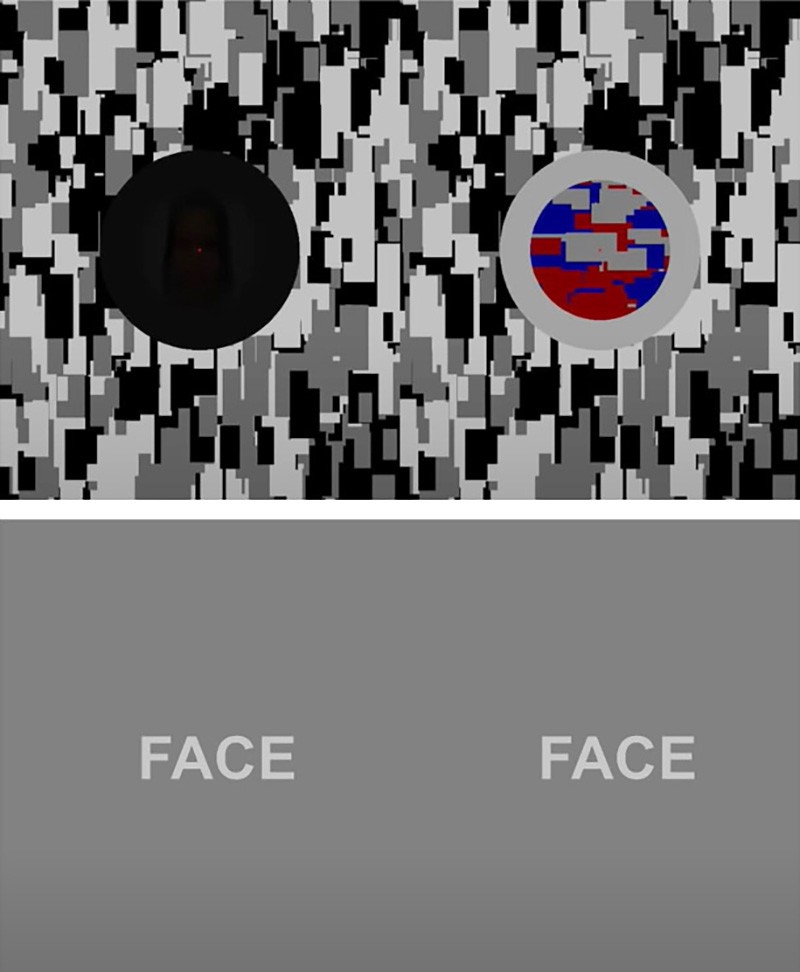
You can think of perception as a sort of controlled hallucination, in which our perceptual predictions are being reined in at all points by sensory experience [Memory] from the world and the body.
M.: A non-local swirl of data.
Case #4 — Jason, edited by M.
“Old flip books in which you flip pages.” — J.
Write a character on each page and flip the pages. It looks like the character moves, but jittery. When your brain constructs a moving image, it is just like that, only our brain smoothes the images out for us, so the image appears fluid and uninterrupted.
If something moves fast, the picture-frames are further apart and if something moves slow the picture frames are closer together. The picture-frames change relative to the speed of light; a pixelated quality. It is like everything that is moving relative to a matrix or a or a grid structure, as pixels on a monitor.

What seeing in this way did to me was stunning. To define motion around me, all I had to do was look at two different moments in time, I would compare two picture-frames. I placed the picture-frames closer together, or in other words, made the time interval smaller. In this way I would get a more fluid and continuous view of reality.
By seeing the world in this way, I started thinking: Am I seeing picture-frames differently than somebody else in a different position or moving at a different velocity relative to me?
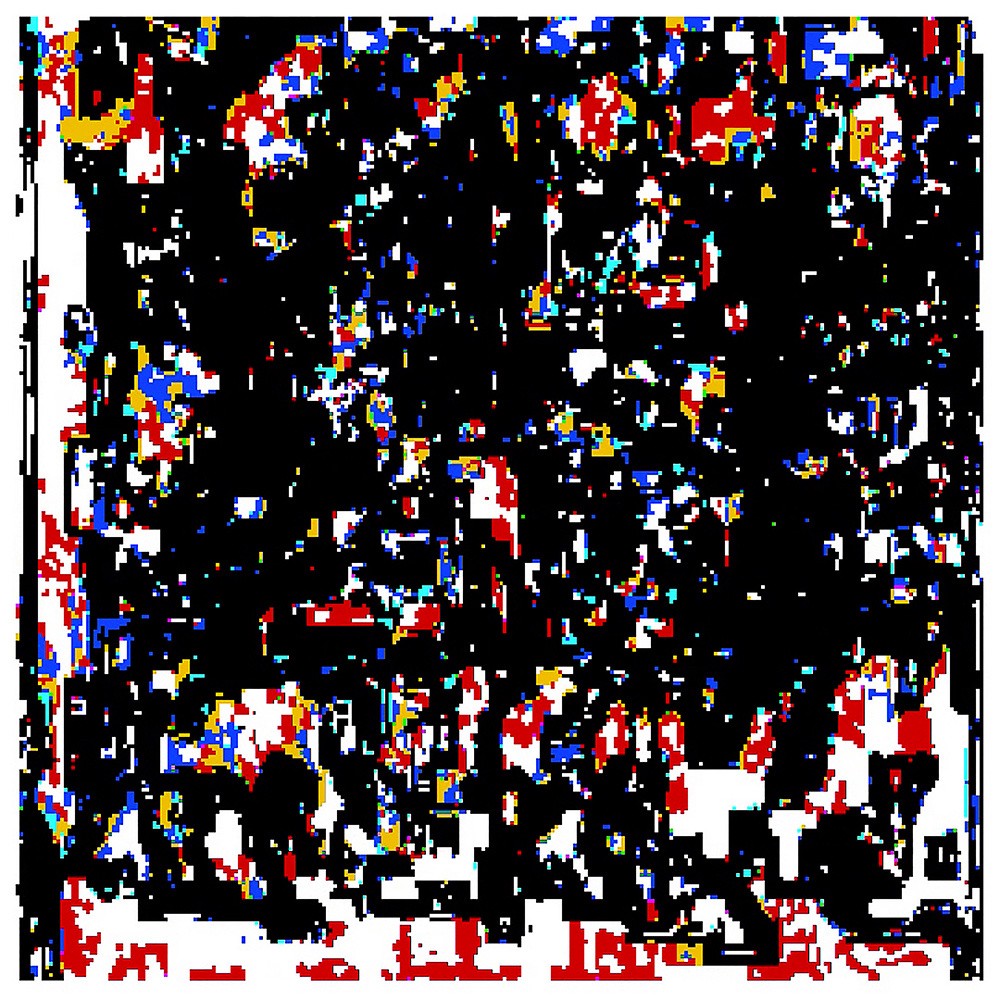
I wondered…Do you see the same picture-frames as I see? — {J}:{M}
This question changed my view of reality. The way reality works turned out to be much richer, far deeper and more science-fiction than I ever could imagine.
When an object moves, its total motion through space and time always equals exactly the speed of light. Space and time are so intimately connected, so interwoven that they truly cannot be separated. Einstein coined this phenomenon space-time.
Everything in the universe displays wave-like behaviour. Even time itself is dependent on waves. Sight, sound, taste, touch, smell, the sense of magnetism, all dependent on waves. If we smell something it is believed by many that we are not only detecting the shape of the molecule, but its vibrational frequency. When we feel something is hot or cold it's because we are struck by the molecular vibration. If it feels cold, it is because the molecules are moving slower. Cold as an entity in itself does not exist, it is a lack of vibration.
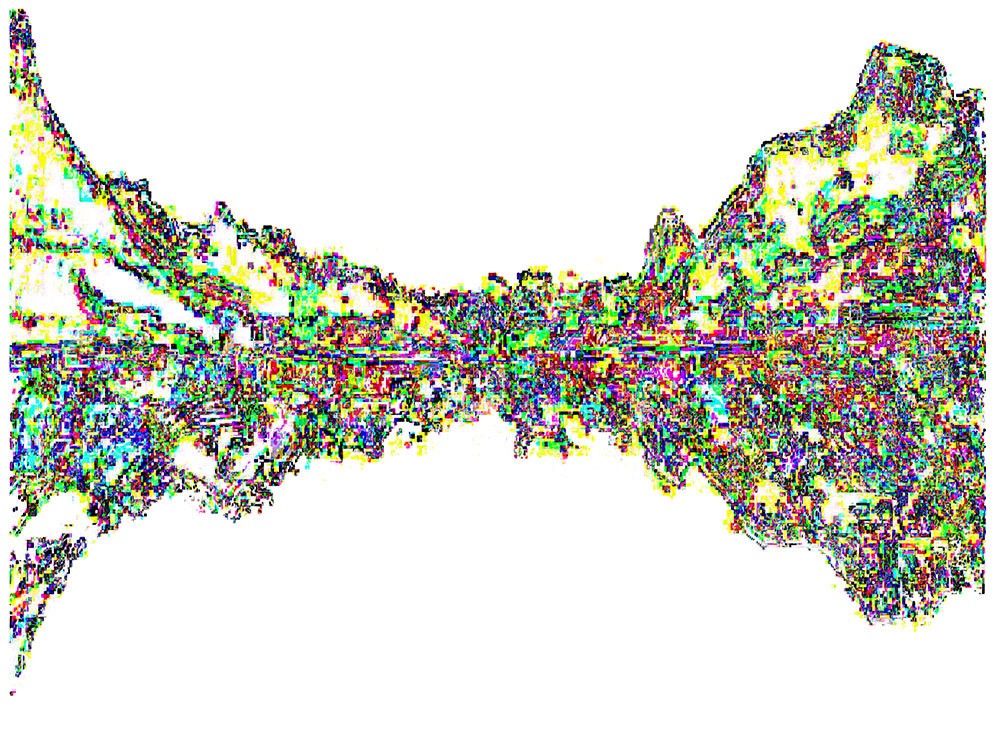
When we hear something, we are dependent on sound waves, and when we see something, we are dependent on light waves. What's so amazing is that waves change based on the position and the velocity of the observer and the observed. We are waves travelling through space-time, even the buildings and the planets, all vibrating at a certain frequency.
Waves are subject to the Doppler effect. When we think of alternate realities, parallel universes, or relativity, it is hard for many of us to believe in this.
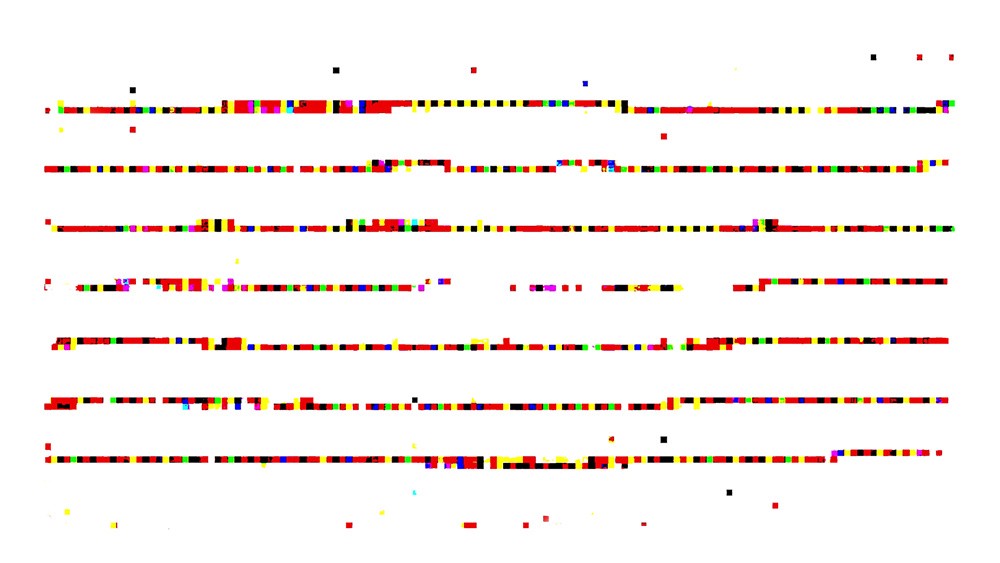
My shirt is blue, you look at it and would agree with me: it is blue. But it is not, it is red and blue, and every color in between. When I sing a note, I would not be singing that one note, I might be singing all notes in existence.
The Doppler effect describes how waves change based on motion. For example, we hear an ambulance drive by, and it produces a noise. The pitch of the noise changes while it passes by because short wavelengths of sound we hear are high pitched and long wavelengths of sound we hear low pitched. As the ambulance is moving towards you that sound wave is getting squished together as those wave fronts get closer, I hear the pitch getting higher and then “BOOM”, it lowers down as the car moves away from me. Those wave fronts are stretching out and getting further apart, so the pitch is getting lower.

Let us add relativity to it.
The ambulance is moving away from Person 1 and towards Person 2. Relative to person 1 the waves are stretching out and getting longer so person 1 hears a low pitch, but at the exact same time to Person 2 the waves are compressing and getting closer together, the pitch is getting higher. Person 3 in the car, travelling along with the wave source, would hear a medium pitch and no sound change at all.
What sound is the ambulance making?
To Person 1 a high pitch.
To Person 2 a low pitch.
To Person 3 a medium pitch.
The experience of the sound is relative to who is hearing it. In reality there is an infinite number of people and they are all hearing sounds racing around town, they are all moving at different velocities relative to these sounds. Every single person hears a different sound. Every single sound is real and valid, but relative to one another.
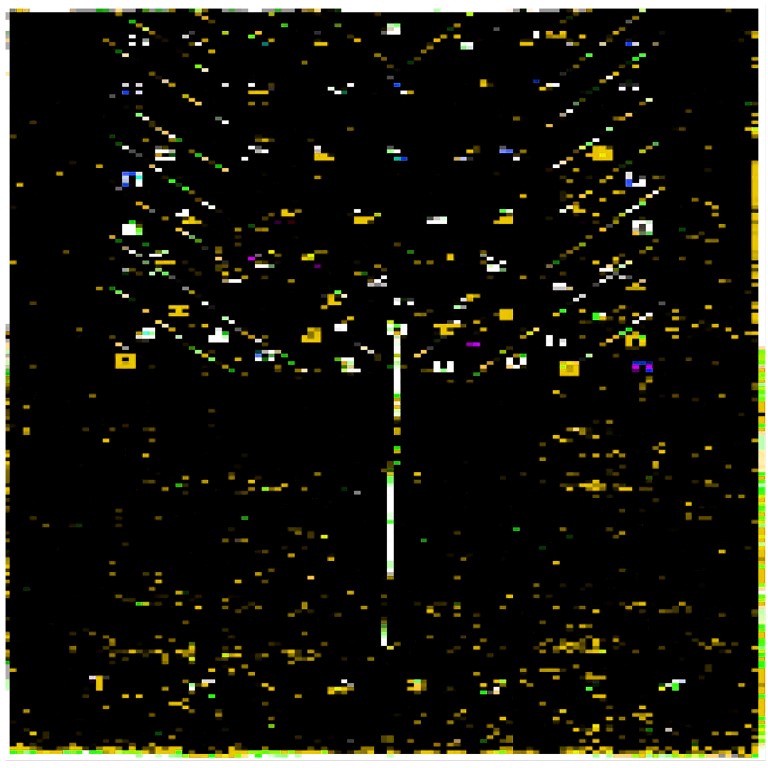
“A tree falls in the forest and there is nobody around to hear it. Was there sound?”
Only if there is someone around with sound receptors to observe the sound.
This same idea applies to light. We all look at my blue shirt and we agree my shirt is blue, a short wavelength of light. Red is a long wavelength of light. Imagine I have a twin brother called J. standing next to me. I am shot away together with my twin brother, close to the speed of light.
The wavelengths of light would stretch out and get longer and longer. People observing from the ground would see my shirt change from blue into red. But my twin flying in motion with M. would see my shirt as blue.
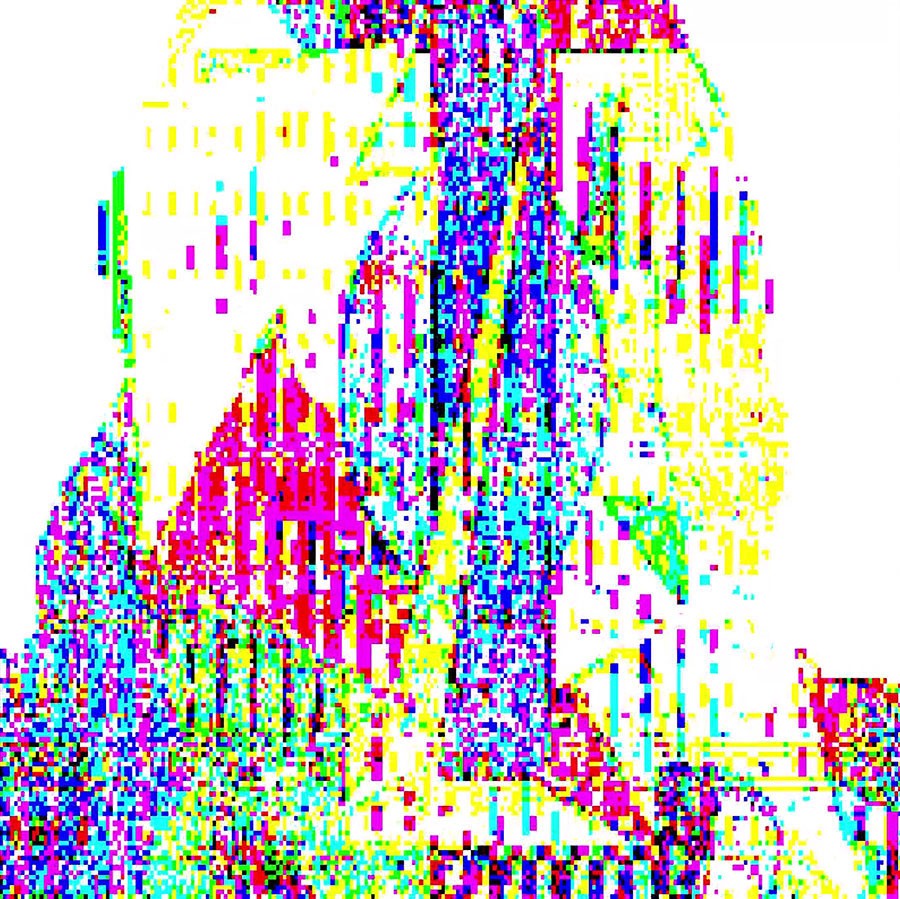
Now imagine there is an infinite number of people looking at my shirt, moving at a different velocity, every single person sees a different color, a different section of the wavelength spectrum.
So, is the color of my shirt red or blue?
A: Black ~ White
Every reality is real, even though every reality is different. Every single moment has the potential to be anything. Every potential can be any reality, it is just the slices of space-time, the picture-frames you realize that become your reality, but all the other realities that you do not see, that you do not experience, they are all just as real seen from another one’s perspective. Once you realize this you can expand into singularity.
Conclusion
We always imagine in terms of time and space, but that is just the stuff of science-fiction. Even the leading-edge-quantum-physicists admit openly that they can only describe the boundary of human perception. They cannot penetrate it or escape it.
What other way is there to experience... What do other higher dimensions really mean? Which way is up? Which way is out?
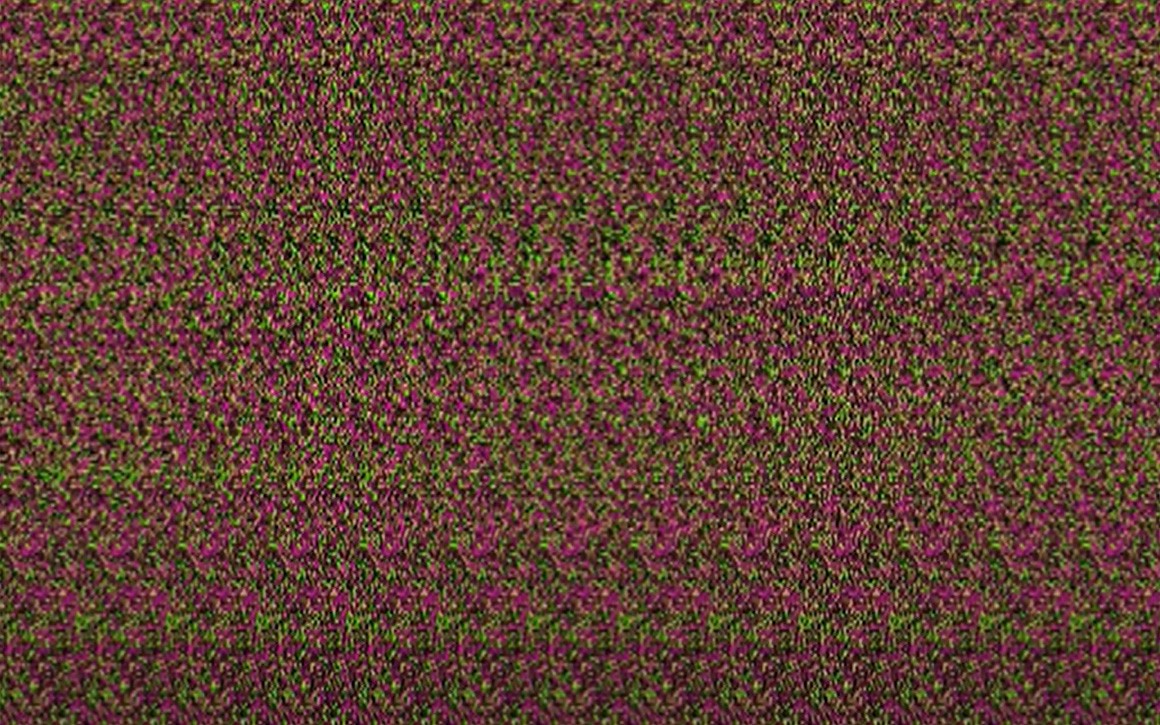
Have you ever seen one of these before? If you have not, then you should really get out more. If you have never seen one of these things and it looks to you like random spattering on Mars, well…
Maybe there is a pattern.
But if there is, it is completely abstract right?
It is not abstract at all. Every mark in the pattern serves a purpose, and the purpose cannot be achieved without it. This is a 3D image and it is encoded into two dimensions. If you use your sense of sight the way that you normally do, you will not be able to see the 3d picture but there is a method.
You must get up close to the screen and put your nose right against it.
Nice nose!
Then pull back your head slowly without refocusing your eyes. If you succeed, then you see the picture as it appears right in front of you.
It is obvious now that the higher dimension always existed along with the lower one. That the lower one could only have been created with the knowledge of what image should be contained in the higher one.
Now think about this; to create such a thing as a 3D image hidden in a 2D drawing gives you the pleasure of effort, discovery and revelation that comes from a quantitatively different dimension.
One that you could never have imagined by just focusing on dots separated in space on the screen, those thoughts encoded into the 2D image. You see, each higher state is more inclusive, more creative, less material, more caring and intentional.
We only get there if we learn how to listen.
I’ve got to go! But if you can’t see the picture then you can always just watch the question.
Credited: Daniel Clement Dennett III ~ Jason Padgett ~ Paul Fletcher ~ Anil Seth ~ Alan Watts ~ M.
End of the Line mashup by Marcel Moonen. M. Production.
[EDUCATIONAL PURPOSE ONLY] Triple A Society
January 2021, Published, 27.2.2021